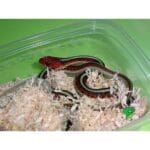California, a land renowned for its diverse ecosystems and breathtaking landscapes, also harbors a hidden world of eight-legged inhabitants. While the thought of venomous spiders might send shivers down your spine, understanding these creatures and their habits can significantly reduce any potential risks.
Venomous Spiders of Concern in California
California is home to a variety of spider species, but only a small fraction poses a significant threat to humans. Let’s delve into the world of these venomous eight-legged creatures:
Widow Spiders (Latrodectus): The Most Notorious
- Western Black Widow (Latrodectus Hesperus): Instantly recognizable by the red hourglass marking on the underside of the female’s abdomen, this spider is responsible for the majority of venomous spider bites in California. Found throughout the state, black widows prefer dark, secluded areas such as woodpiles, garages, and sheds.
- Brown Widow (Latrodectus geometricus): Less common than its black counterpart, the brown widow still warrants caution. Distinguished by their tan to brown coloration and a less distinct hourglass marking, they share a similar preference for undisturbed habitats.
Recluse Spiders (Loxosceles): A More Nuanced Threat
- Desert Recluse (Loxosceles deserta): Native to Southern California, this recluse favors dry, undisturbed habitats. While their venom can cause necrotic tissue damage, bites are relatively rare.
- Chilean Recluse (Loxosceles laeta): An introduced species found in limited areas, primarily Southern California, the Chilean recluse is believed to be more aggressive than its desert-dwelling relative. It also possesses a potentially more potent venom.
- Brown Recluse (Loxosceles reclusa): Despite their fearsome reputation elsewhere, brown recluses are incredibly rare in California. Only a handful of sightings have been officially documented, highlighting the importance of accurate identification.
Yellow Sac Spider (Cheiracanthium inclusum): Often Misunderstood
While not as medically significant as widows or recluses, Yellow Sac Spiders are known for their relatively frequent bites. These bites, often misattributed to other spiders, typically cause localized pain and swelling.
Ask yourself do barracudas attack humans? If yes, what do you do when they do? The answer to these and many more questions about deadly sea creatures can be found here.
Venom vs. Poison: A Crucial Distinction
Understanding the difference between venomous and poisonous creatures is vital for accurate risk assessment:
- Venomous: Inject toxins directly through a bite, like the spiders discussed above.
- Poisonous: Release toxins when ingested or touched. Most spiders fall into this category, but their venom is generally harmless to humans. Think of it this way: you can safely hold a poisonous spider, but you wouldn’t want to be on the receiving end of a venomous spider’s bite.
Minimizing the Risk: Coexisting with Caution
While venomous spiders exist in California, encounters are relatively rare. Simple precautions can further reduce your risk:
Home and Garden Strategies
- Reduce Clutter: Spiders thrive in undisturbed areas. Declutter your home and yard regularly to minimize potential hiding spots.
- Outdoor Precautions: Wear gloves while gardening, especially when reaching into dark, undisturbed areas.
- Shake It Off: Before slipping into shoes or putting on clothing stored outside, give them a good shake. Spiders might find these items to be cozy retreats.
The American House Spider: More Nuisance than Threat
The American House Spider (Parasteatoda tepidariorum), also known as the Common House Spider, often evokes fear due to its presence in our homes. However, these spiders are not considered aggressive and their bites, while potentially painful, are not medically significant.
Spiders: A Vital Part of the Ecosystem
It’s important to remember: while some spiders pose a threat, the vast majority are harmless and play a crucial role in our ecosystem. They act as natural pest control, keeping insect populations in check. By understanding these creatures and taking reasonable precautions, we can coexist with them safely.
Do you feed do squirrels eat almonds to your pet squirrel? This article discusses the types of food that you can feed your pet squirrel.
- Crypto Quotes’ Red Flags: Avoid Costly Mistakes - June 30, 2025
- Unlock Inspirational Crypto Quotes: Future Predictions - June 30, 2025
- Famous Bitcoin Quotes: A Deep Dive into Crypto’s History - June 30, 2025
















